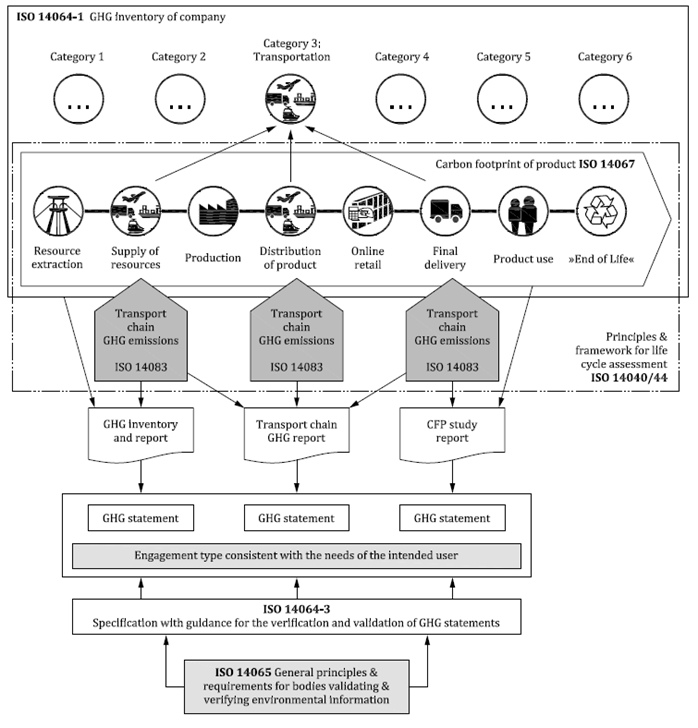CO2 Emission Values
Calculation of CO2 emissions according to ISO 14083:2023 and FAIR CARBON PLAYER
After several years of preparation, the ISO organization has published the new standard 14083:2023. This new standard for the transport chain is in line with ISO 14064-1 (company carbon footprint), 14064/14067 (products) and ISO 14040/14044 (life cycle).
CarbonCare has had its methodologies and calculation principles audited by the independent certification company SGS. They have positively validated the CarbonCare calculator according to ISO 14083:2023. With this validation, CarbonCare is also validated according to the requirements of GLEC (Global Logistics Emission Council). This gives our customers maximum commitment on a global level.
All distances for transport activities are based on Shortest Feasible Distance (SFD), except for AIR which is based on Great Circle Distances (GCD). For more information, see the link "CO2e - Calculation Methodology ".
These globally recognized standards, which cover all types of transport and hub handling, are implemented uniformly by CarbonCare. This makes CarbonCare one of the few global calculators that consistently and transparently calculates all CO2e equivalents from goods transport and handling activities. The calculations are based on realistic and regularly measured annual values and enable companies to actively combat climate change and reduce emissions or mitigate the negative consequences by investing in climate protection projects.
